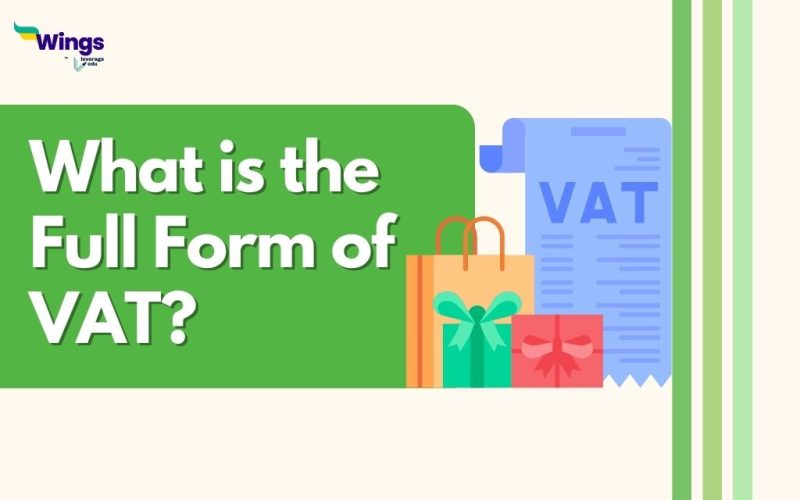Whenever you settle your bill in a restaurant, you must have seen the term “VAT” written in it along with the total cost of the food ordered. But what does VAT stands for, and what does it signify? In addition to the VAT full form, this blog will also explore its functions and significance in the tax system. Read on to know more!
VAT Full Form
Table of Contents [show]
The full form of VAT is Value Added Tax, a tax that is levied on the value added to a product or service at each stage of its production or distribution. The VAT rate varies from country to country and from product to product. Some products may be exempt from VAT or have a lower rate, such as food, medicine, books, etc. It may also depend on the type of business, such as small businesses, exporters, etc.
Why is VAT important?
Here are some reasons why value-added tax is important:
- VAT is an important source of revenue for many governments around the world. It helps them fund public services and infrastructure development.
- It also helps governments reduce their dependence on income tax and other direct taxes, which may be more difficult to collect and administer.
- VAT is more transparent and uniform than other indirect taxes like sales tax or excise tax, as it applies to all stages of production and distribution and does not discriminate between different types of products or businesses.
- It is also more efficient and fair, as it avoids double taxation and the cascading effect of taxes and allows dealers or sellers to claim credit or refund for their input taxes.
How does VAT work?
Suppose a farmer sells cotton worth Rs. 100 to a manufacturer and pays Rs. 10 as VAT (10% rate). The manufacturer sells the fabric worth Rs. 200 to a garment maker and pays Rs. 20 as VAT (10% rate). The garment maker sells the clothes worth Rs. 300 to a retailer and pays Rs. 30 as VAT (10% rate). The retailer sells the clothes worth Rs. 400 to a consumer and pays Rs. 40 as VAT (10% rate).
The government collects Rs. 100 as VAT from all the sellers (10 + 20 + 30 + 40). But each seller can also claim a credit or refund for the VAT they have paid on their purchases. The farmer has no credit or refund because he has not bought anything. The manufacturer can claim Rs. 10 as credit or refund because he has paid Rs. 10 as VAT on his purchase from the farmer. The garment maker can claim Rs. 20 as credit or refund because he has paid Rs. 20 as VAT on his purchase from the manufacturer. The retailer can claim Rs. 30 as credit or refund because he has paid Rs. 30 as VAT on his purchase from the garment maker.
Therefore, the net VAT paid by each dealer or seller is:
- Farmer: Rs. 10 (10 – 0)
- Manufacturer: Rs. 10 (20 – 10)
- Garment maker: Rs. 10 (30 – 20)
- Retailer: Rs. 10 (40 – 30)
The net VAT paid by each dealer or seller is equal to the value they have added to the product or service.
Must Read: What is the IFA Full Form?
Must Read: What is the Full Form of BMC?
We hope this blog has helped you understand what is the full form of VAT and what it means for you as a consumer or a business owner. If you have any questions or feedback, please feel free to leave a comment below. Go through this full form list or visit our full form page to know more full forms like this.
 One app for all your study abroad needs
One app for all your study abroad needs















 45,000+ students trusted us with their dreams. Take the first step today!
45,000+ students trusted us with their dreams. Take the first step today!
